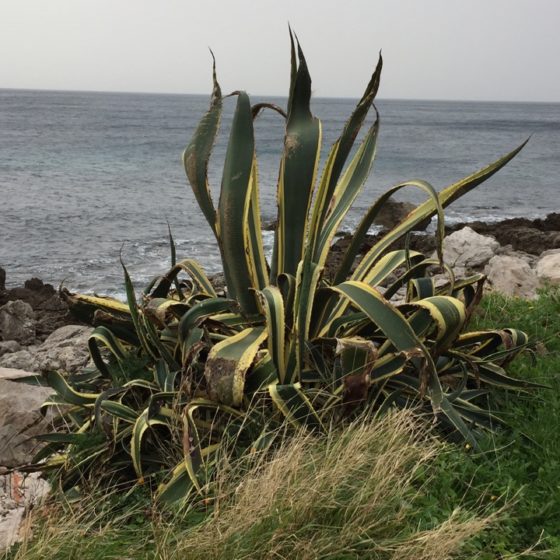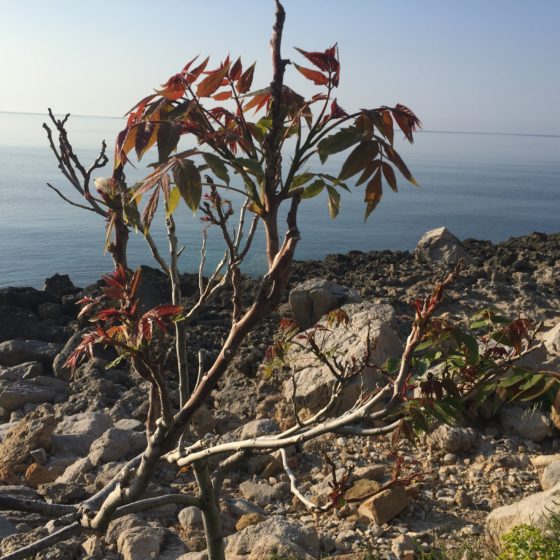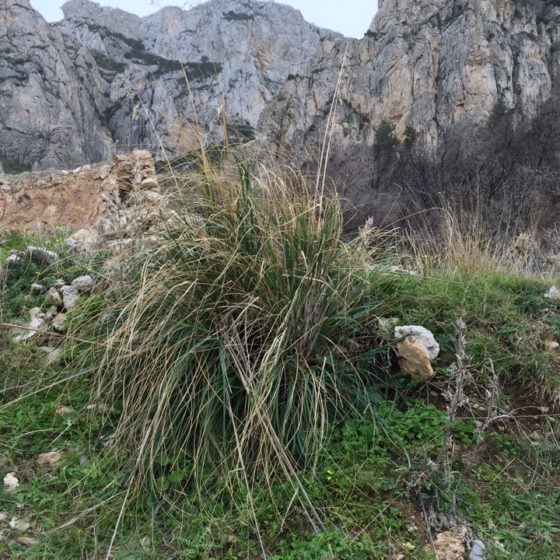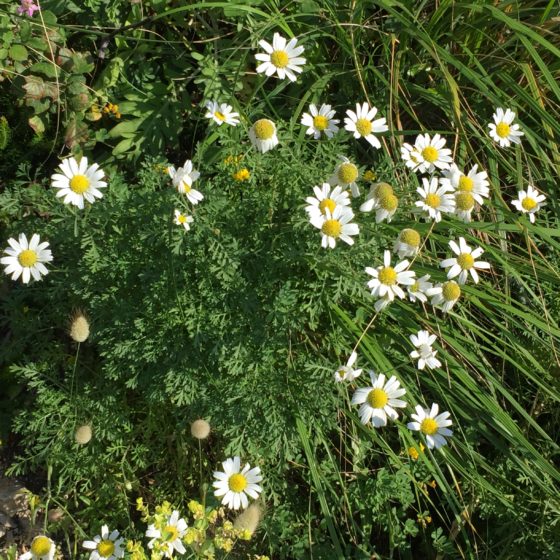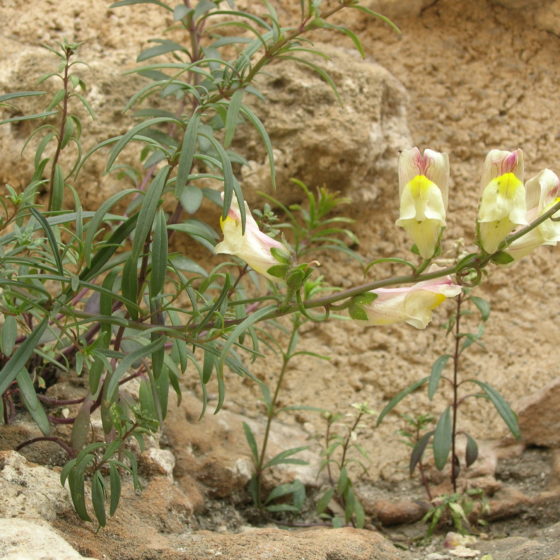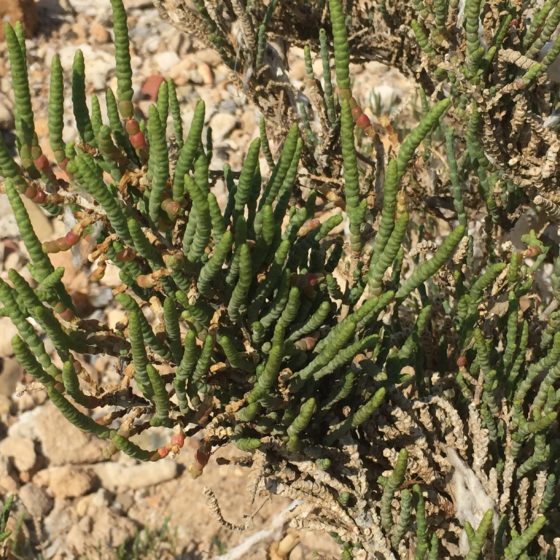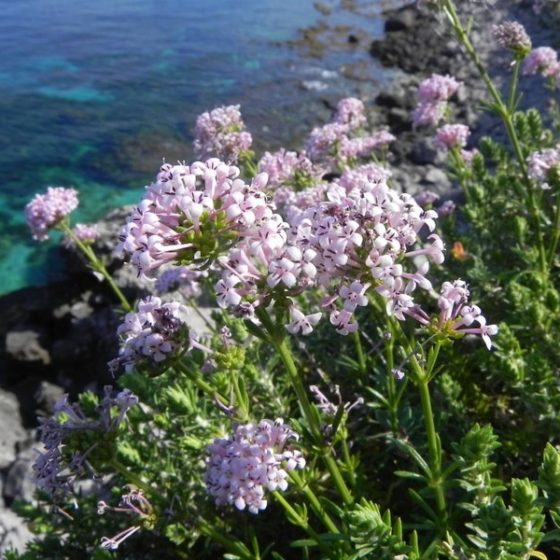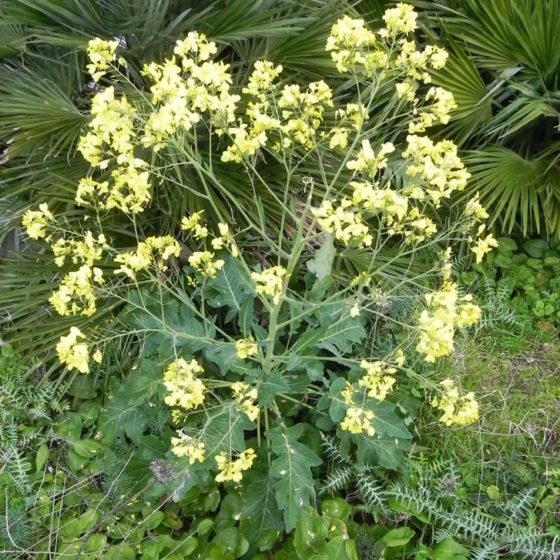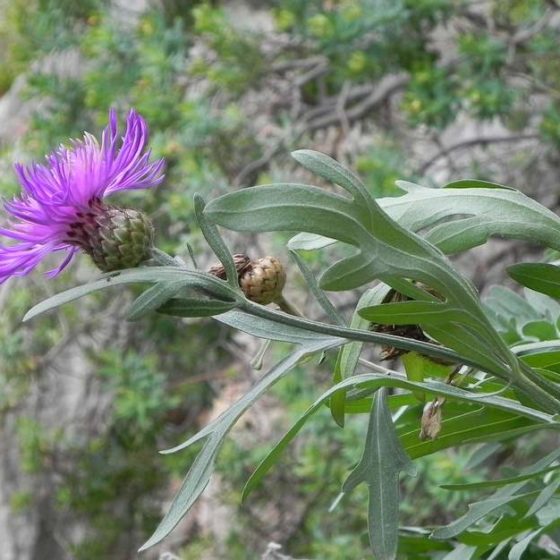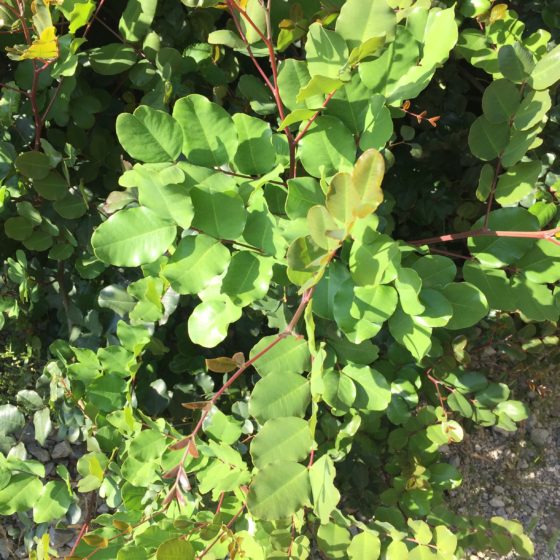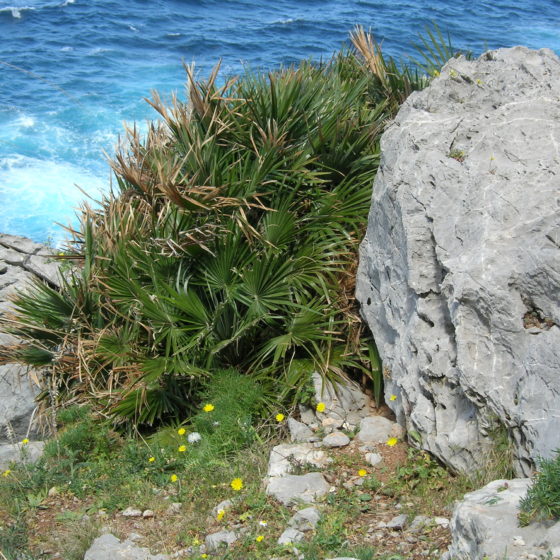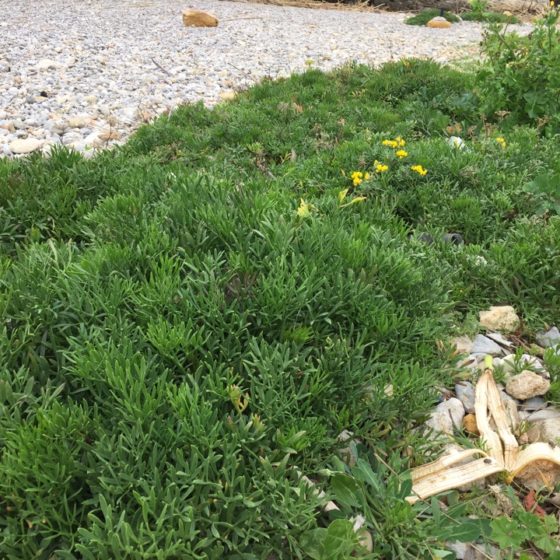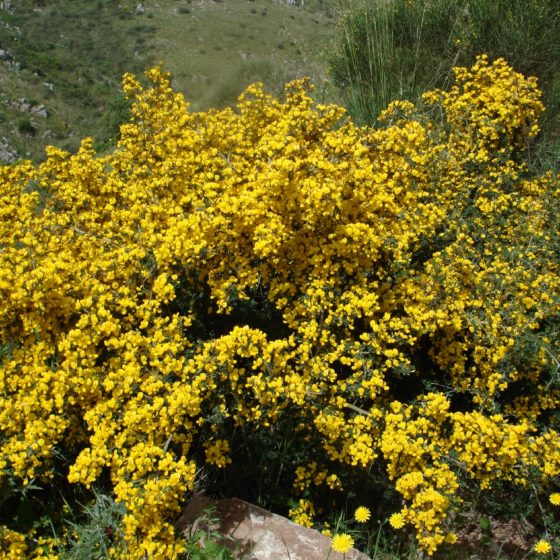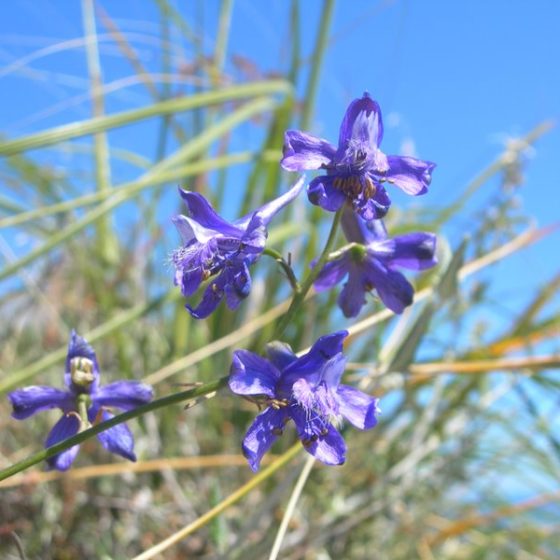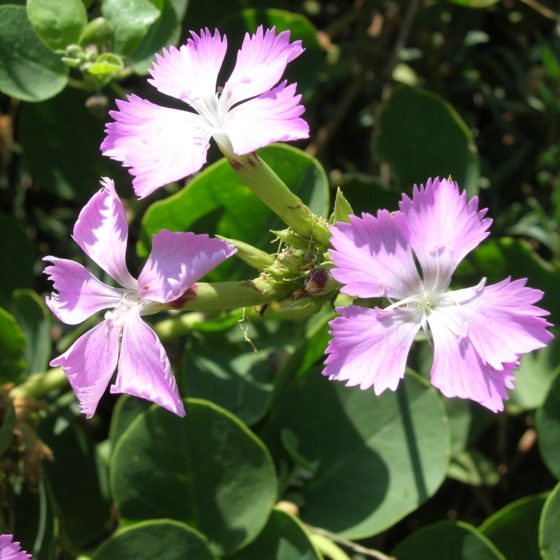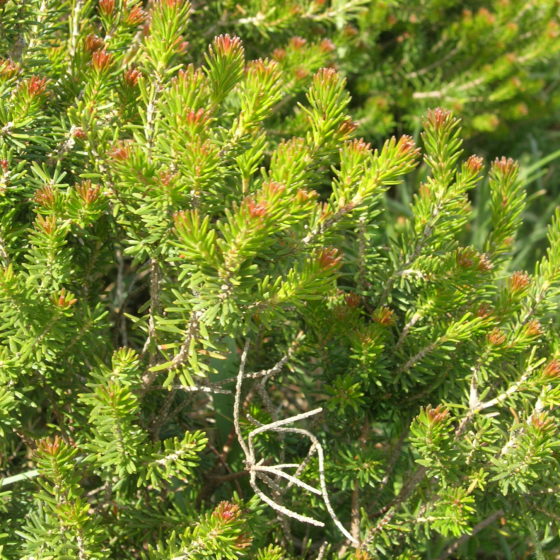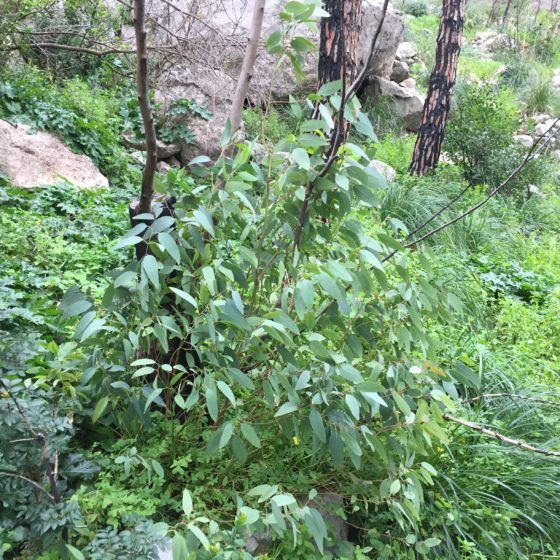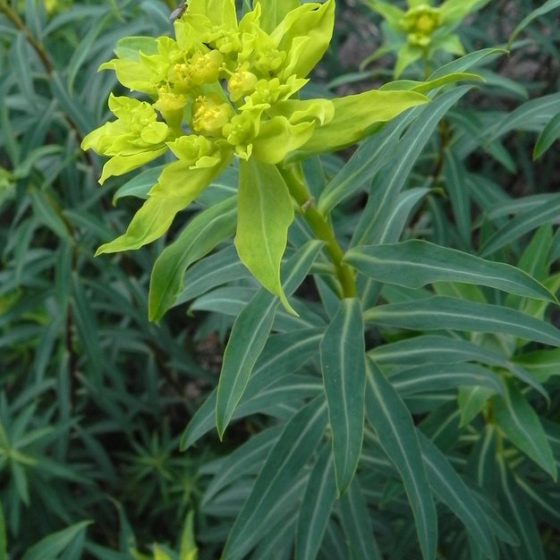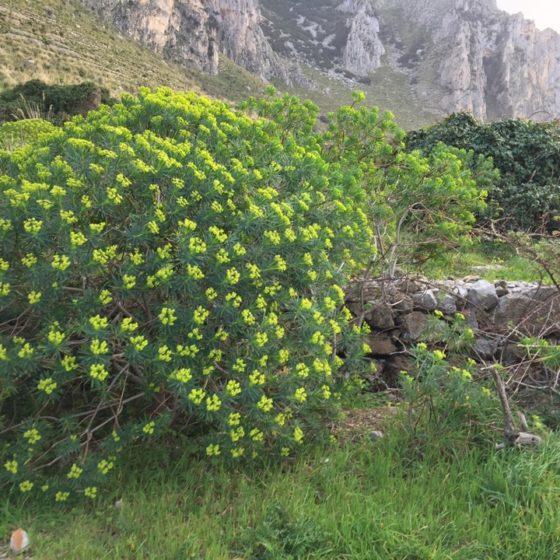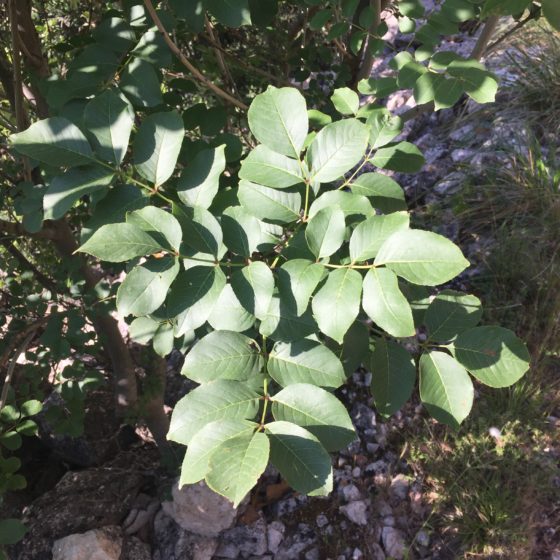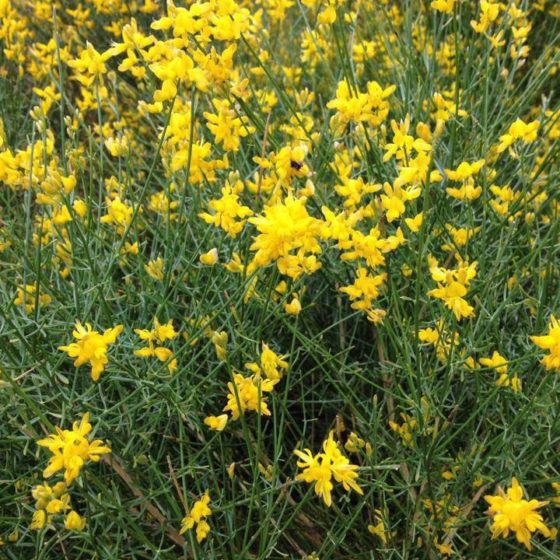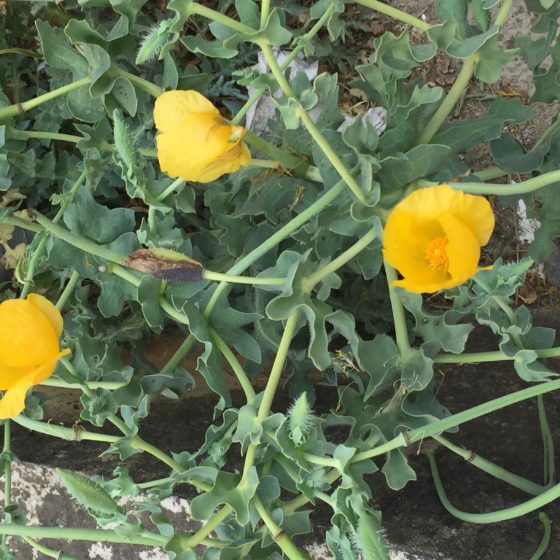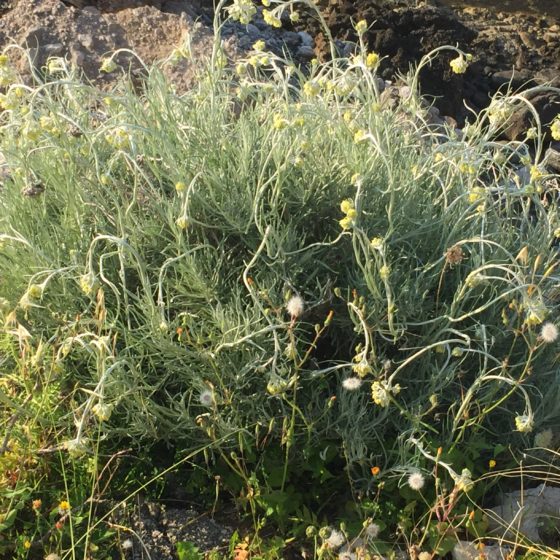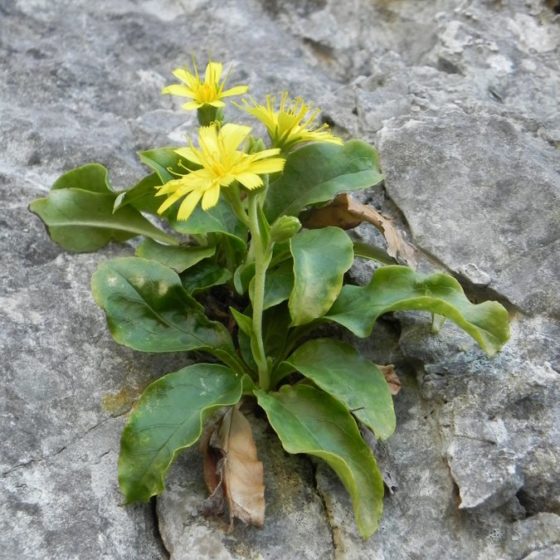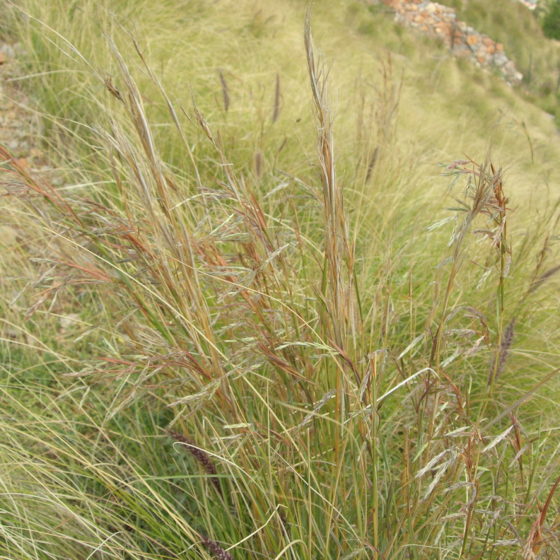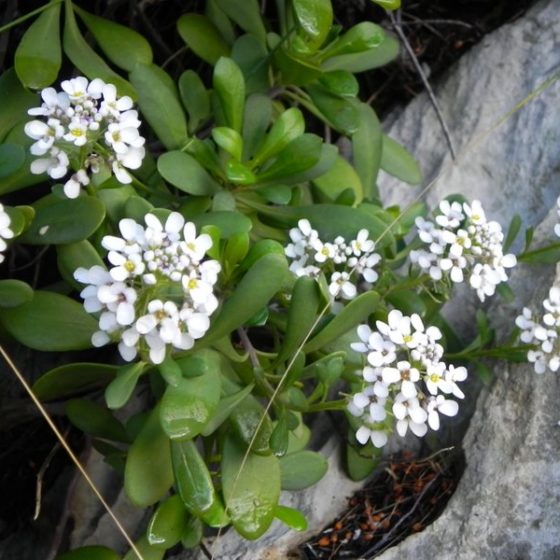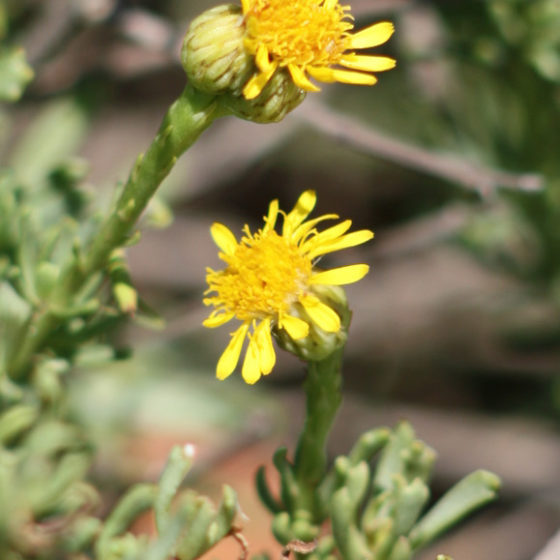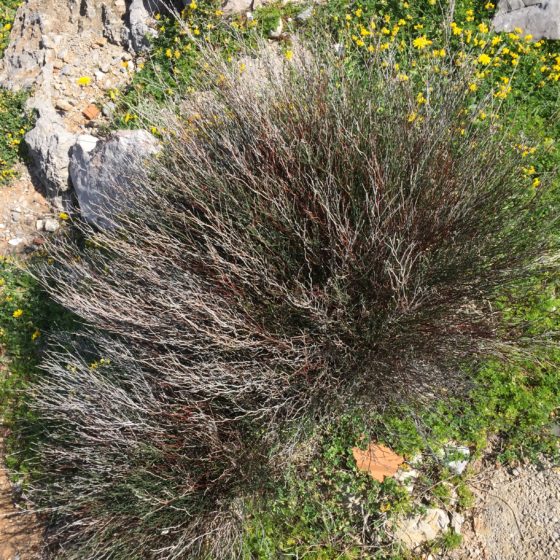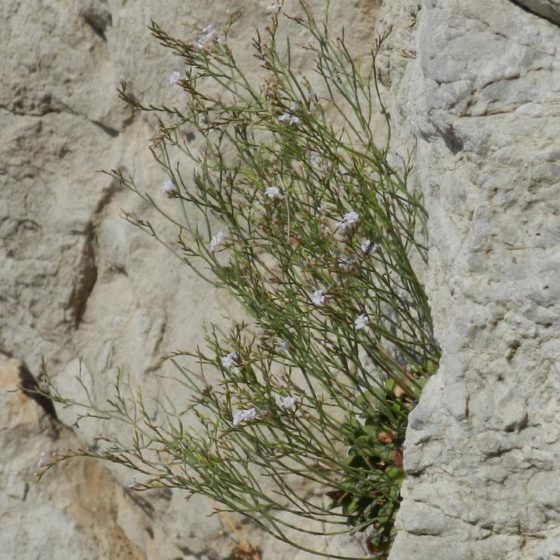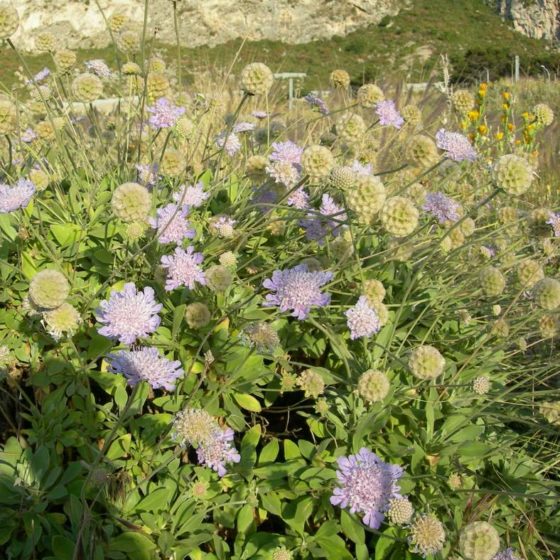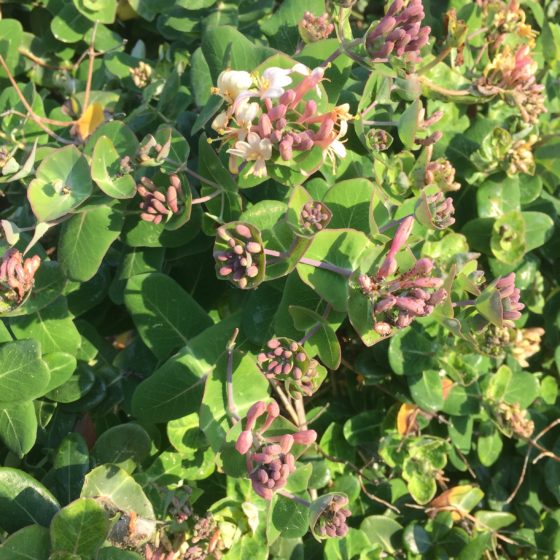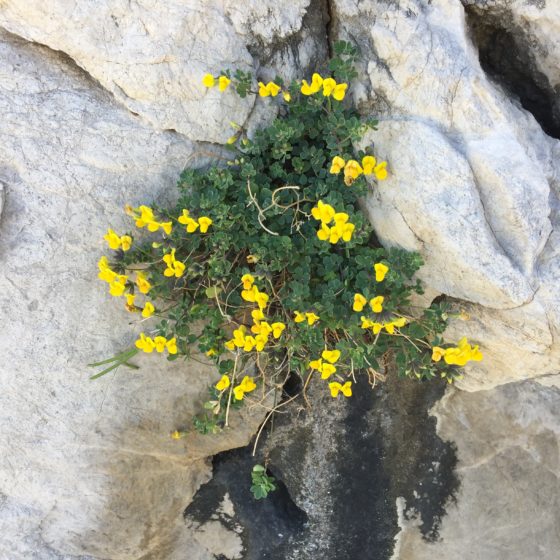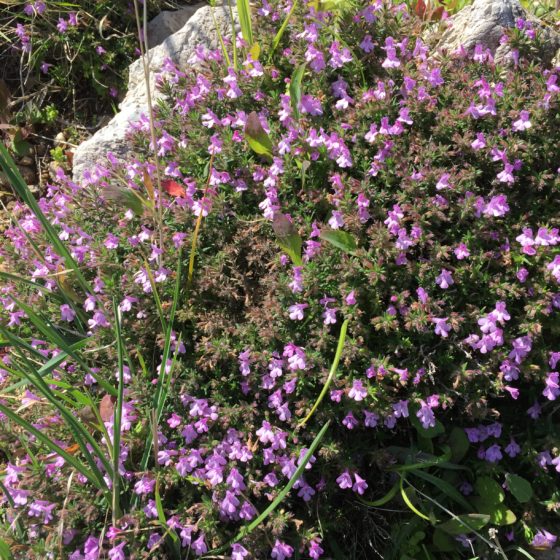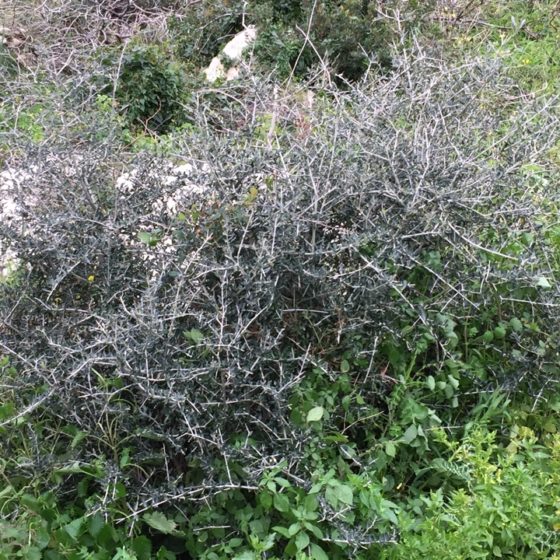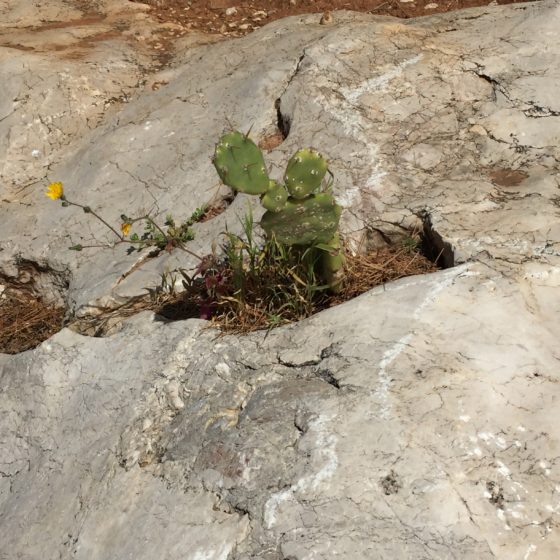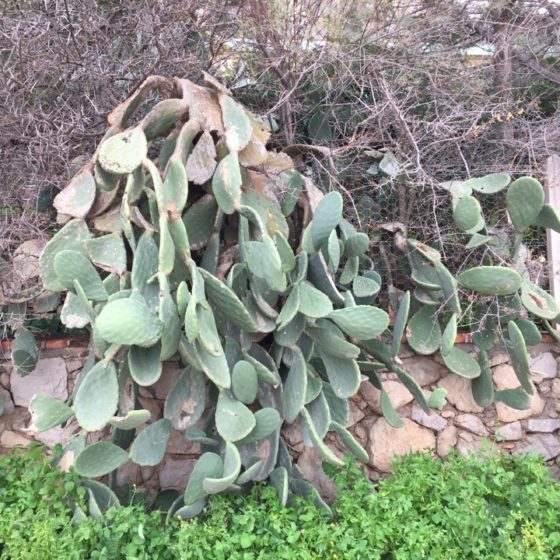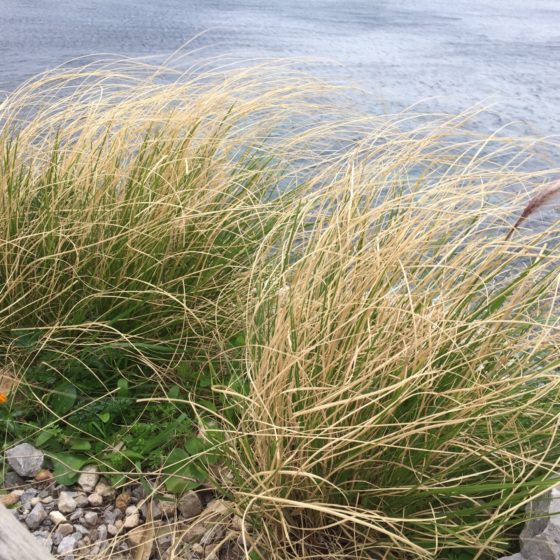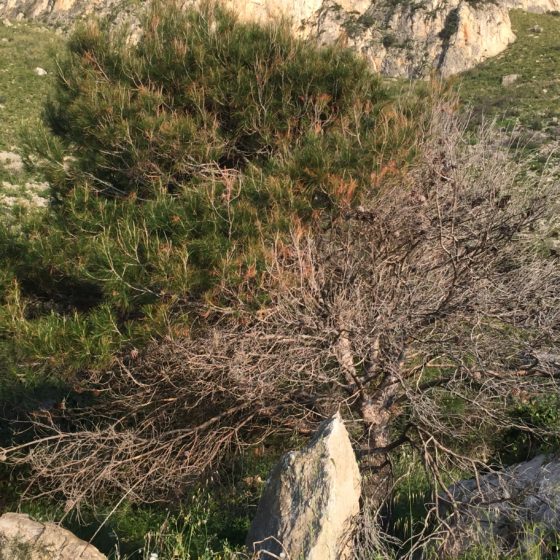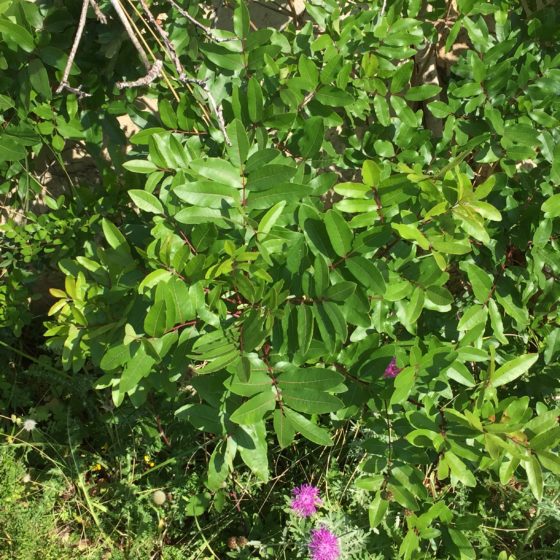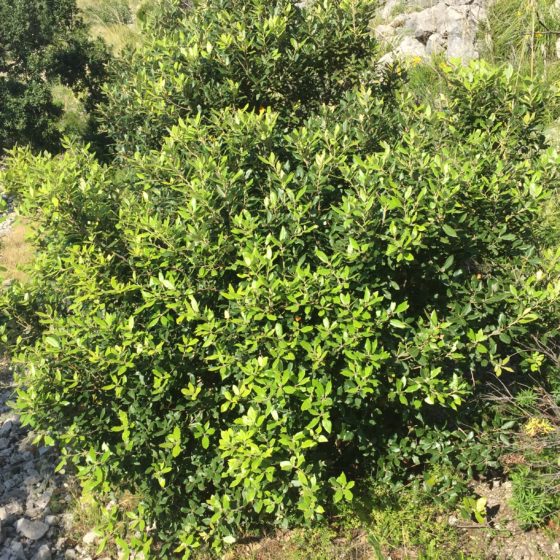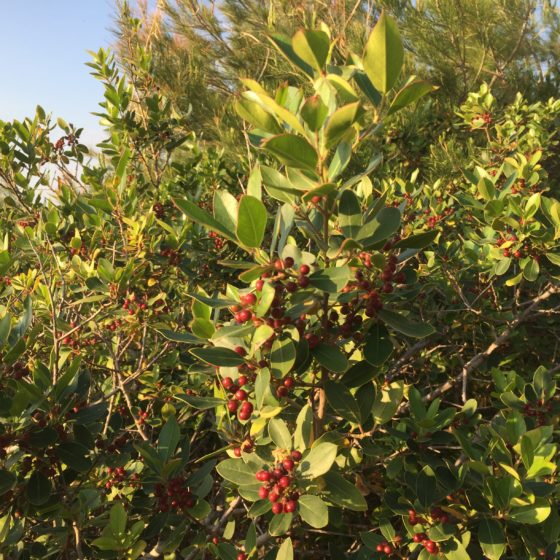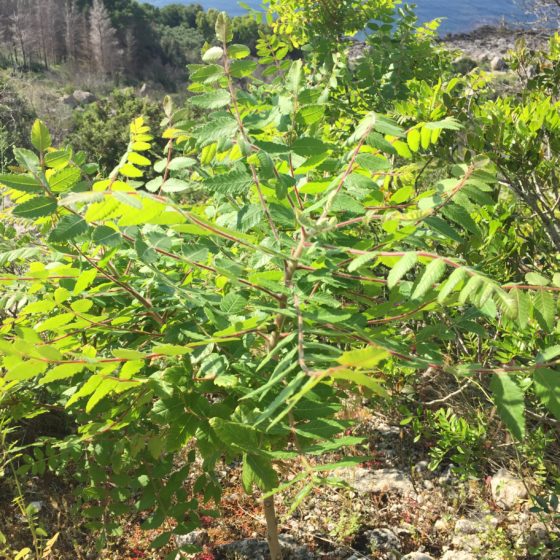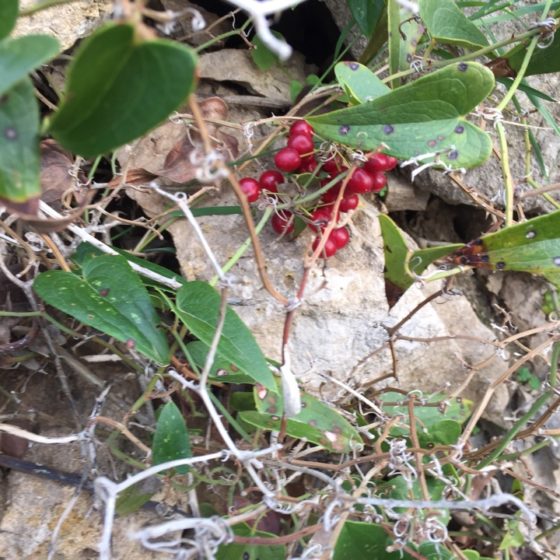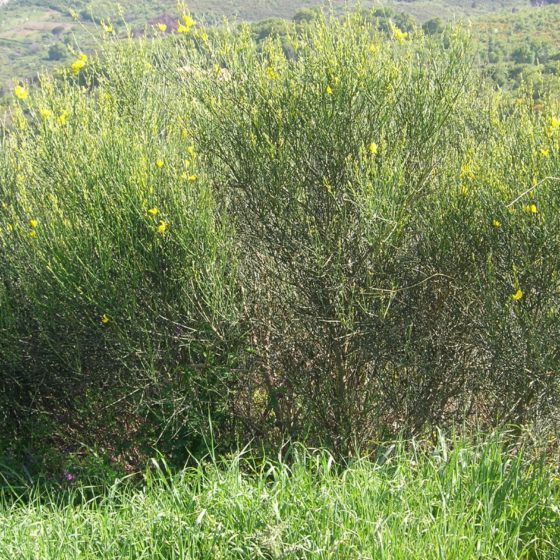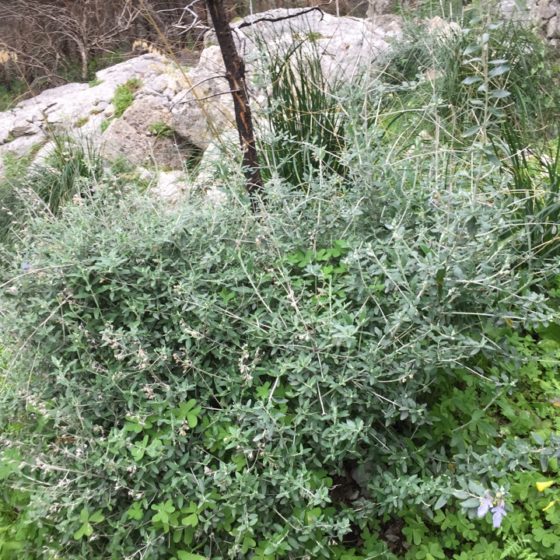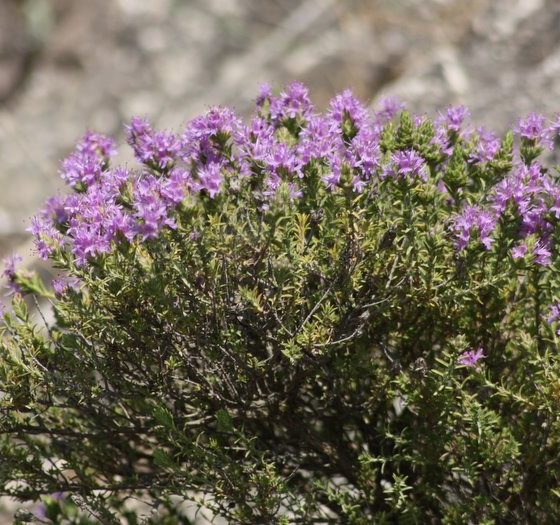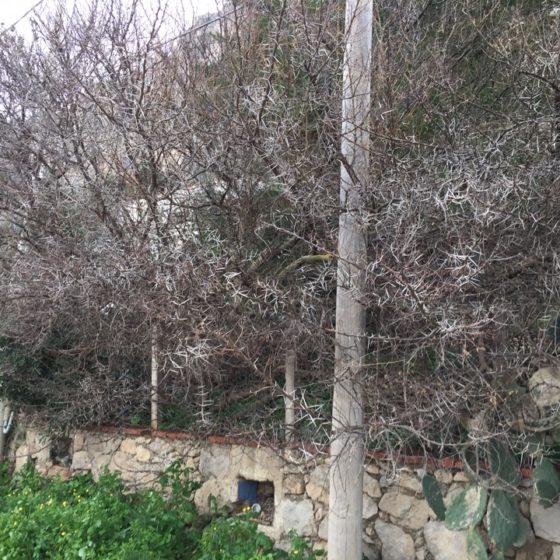The current vascular flora in the Capo Gallo Nature Reserve (Map of Vegetation “Tavola Cap_1.B_4, Piano di Gestione Promontori del Palermitano) consists mainly of Mediterranean species of a certain importance, as well as the taxa of other species such as European and paleo-temperate. The southern slope is mainly characterized by artificial forest plants and by alien plant species that are sometimes spontaneous and invasive, while the northern side presents a whole series of large rocky walls that favor the establishment of a rich floristic component both of large distribution elements and numerous and rare endemic entities of particular phytogeographical interest. Among the rare endemic entities some are exclusive of the Reserve, others are typical of submontan rock habitats of Sicily, others are still present in southern Italy and Sardinia. The slopes facing south-east are rather denuded and monotonous while those in the north are rather varied and rich in plant species. Finally, there are some traces of cultivated agricultural specias, among which: Ceratonia siliqua L. (Carrubo), Olea europaea L. var. europaea (Olivo), Rhus coriaria L. (Sommacco siciliano), etc.
The potential vegetation (Standard Data Form, Natura 2000, ITA020006, Capo Gallo) of the Nature Reserve are the following series:
1. the dwarf fan palm (Pistacio-Chamaeropo humilis sigmetum), along the subcoastal slopes;
2. the holly oak and the Italian buckthorn (Rhamno-Querco ilicis sigmetum pistacietoso terebinthi), on the debris slopes;
3. the wild olive tree (Oleo-Euphorbio dendroidis sigmetum), on the steepest slopes and rocky ridges (south face);
4. the holly oak and the mastic tree (Pistacio-Querco ilicis sigmetum), in the upper part of the plain.
To the following series there are, obviously, the microgeoseries linked to particular edaphic conditions, as in the case of the rocky walls, as previously mentioned.
The vegetation landscape of the Reserve is characterized by the following plant communities:
1. Halophytic cliff communities
Spread along the rocky coasts, they are constituted by a halophila-rupicola vegetation typical of the “Cliffs with vegetation of the Mediterranean coasts with Limonium spp. endemic” both on the northern and southern sides of the Reserve. These are specialized plants, mostly chasmophytic, which have the ability to live in cracks in the rocks and to resist direct contact with sea water and marine aerosol. Among the characteristic species we remember:
Crithmum maritimum L. (Finocchio marino), Inula crithmoides L. (Enula bacicci), Arthrocnemum glaucum (Delile) Ung.-Sternb. (Salicornia glauca), Glaucium flavum Crantz (Papavero cornuto), Lotus cytisoides L. (Ginestrino delle scogliere). Of the endemic species there are: Limonium bocconei (Lojac.) Litard. (Limonio siciliano di Boccone) and the rare Limonium panormitanum (Tod.) Pignatti (Limonio palermitano) also present in rocky condition.
2. Bush, Scrubland and Garigue
Along the north-western slopes of the Reserve, in semi-rocky areas, there are bushes, quite stable holly oak plants, scrubland and garigue. Small groups consisting of xerophytic species, low shrubs with evergreen sclerophylls or other Mediterranean elements with summer deciduous leaves (Euphorbia dendroides L.) intercalated with Ampelodesmos mauritanicus (Poiret) Dur.
They are distinguished:
• Rhamno-Quercetum ilicis bushes, with a remarkable landscape imprint, mainly above the Fossa, near Costa Mazzone and near Pizzo Vuturo or Avvoltoio (northern slope);
• degraded vegetation of the Quercion ilicis near the Sferracavallo entrance to the Reserve;
• Oleo-Euphorbietum dendroidis scrubland, in the northern slope mainly between Malo Passo and Piano dello Stinco, on the southern slope of Pizzo Impiso, near the Grotta della Calcara and near the Cozzo Portello, on the seaside of the Mondello village between the Caprai and Perciata Caves;
• Pistacio-Chamaeropetum humilis scrubland, under the Mazzone coast and near the last stretch of the Marinella-Faro trail, right in the Faro area but also in the first part of the Pietra Tara trail below the Fossa and along the sub-coastal slopes ;
• Calicotome villosa low scrubland, near the northernmost part of the Piano dello Stinco-Semaforo trail, between Torre Amari, Piano dello Stinco and Bauso Rosso.
Among the most representative species are:
Calicotome infesta (Presl.) Guss. (Ginestra spinosa); Calicotome villosa (Poir.) Link; Ceratonia siliqua L. (Carrubo); Chamerops humilis L. (Palma nana); Erica multiflora L. (Erica multiflora); Euphorbia dendroides L. (Euforbia arborescente); Fraxinus ornus L. (Orniello); Lonicera implexa Aiton (Caprifoglio mediterraneo); Myrtus communis L. (Mirto comune); Olea europaea L. var. sylvestris Brotero (Olivastro); Pistacia lentiscus L. (Lentisco); Pistacia terebinthus L. (Terebinto); Quercus ilex L. (Leccio); Rhamnus alaternus L. (Alaterno); Smilax aspera L. (Salsapariglia, Stracciabraghe); Spartium junceum L. (Ginestra comune); Teucrium fruticans L. (Camedrio femmina); Thymbra capitata (L.) Cav. (Timo arbustivo).
3. Steppic communities
The most present communities of the Reserve are characterized by grasslands consisting of perennial autochthonous and/or allochthonous herbaceous “pyrophyte” species.
They are widespread due to fires, that have mainly depleted potential woody and shrubby species, and to grazing, these are represented by:
Helictotricho-Ampelodesmetum grassland, where the Ampelodesmos mauritanicus (Poiret) Dur (Ampelodesma) predominates. They are located between the Fossa, Pizzo Vuturo, Pizzo della Vuletta, Bauso Rosso, Piano dello Stinco, Pizzo della Sella;
Hyparrhenietum hirto-pubescentis grassland, where the Hyparrhenia hirta (L.) Stapf (Mediterranean Poodle) predominates. They are located on the southern slopes of the Reserve, near Pizzo Impiso, Colonne, Spina Santa, and above the town of Mondello just below Bauso Rosso and Grotta Bianca, Grotta dell’Acqua and Grotta Perciata. Small nuclei are also found on the Northern side, the Fossa area (Sferracavallo hillside) and near the Pietra Tara trail;
Rare Bothriochloo panormitanae-Hyparrhenietum hirtae grassland present only in the locality of Pizzo Coda di Volpe with Bothriochloa pertusa (L.) Camus var. panormitana (Parl.) Maire (Barboncino palermitano) and Hyparrhenia hirta (L.) Stapf (Barboncino mediterraneo);
Diffused Pennisetum setaceum (Forssk.) Chiov. (Penniseto allungato, invasive allochthonous species) grasslands, mainly, on the southern side in substitution of potential species. They are also found near Pizzo Impiso, Colonne, Spina Santa, above the inhabited area of Mondello, near the Bauso Rosso and Grotta Bianca area, Grotta dell’Acqua and Grotta Perciata, along the trails (Mondello side) Marinella-Faro and Semaforo. Little diffused on the Northern side, where there are only small nuclei in the Fossa area (on the Sferracavallo hillside), near the Pietra Tara and Malo Passo trail.
On the semi-rocky areas, the grasslands are mixed with garigue aspects, that constitute environments that often host some endemisms of considerable phytogeographical interest.
Among the rare endemic species there are: Delphinium emarginatum Presl. (Speronella smarginata), Genista gasparrinii (Guss.) Presl. (Ginestra di Gasparri), Ophrys sphegodes Mill. subsp. panormitana (Tod.) Nelson (Ofride verde scura di Palermo), Ophrys sphegodes Mill. subsp. sicula Nelson (Ofride verde-bruna siciliana), Pimpinella anisoides Briganti (Tragoselino meridionale).
4. Rocky plant communities
The rocky walls have endemic chasmophytic expressions, sometimes exclusive of the Reserve, with a high nature value. They are mainly located in the northern slope of the Reserve, near Monte S. Margherita, above the town of Fossa (on the Sferracavallo side), on the Pizzo della Sella wall, Pizzo Vuturo, Torre Amari, the Malo Passo walls, Costa Mazzone and on the rocky walls above Fossa (Mondello side).
Among the exclusive endemisms of the rock faces are: Anthemis ismelia Lojac. (Camomilla del Monte Gallo), Centaurea ucriae Lac. subsp. umbrosa (Lac.) Cela Renzoni and Viegi, (Fiordaliso ombroso di Bernardino da Ucria), Hieracium lucidum Guss. (Sparviere lucido), Seseli morsels Guss. subsp. bocconi (Finocchiella di Boccone), Limonium panormitanum (Tod.) Pignatti (Limonio palermitano). Other valuable rock species include: Allium lehmannii Lojac. (Aglio di Lehmann), Antirrihinum siculum Miller (Bocca di leone siciliana), Brassica rupestris Rafinesque (Cavolo rupestre), Capparis spinosa L. subsp. rupestris (Sm.) Nyman (Cappero spinoso delle rupi), Dianthus rupicola Biv. (Garofano delle Rupi), Glandora rosmarinifolia (Ten.) D.C. Thomas (Erba pearla), Iberis semperflorens L. (Iberide florida), Lomelosia cretica (L.) Greuter&Burdet (Vedovina delle scogliere), Pseudoscabiosa limonifolia (Vahl) Devesa (Vedovina a foglie di Limonio).
5. Artificial forest populations
There are artificial reforestations with allochthonous wood species, mainly coniferous, on the northern slope near the Sferracavallo entrance to the Reserve, in the upper part of the Pietra Tara trail below Pizzo Vuturo, as well as on the south-east flank in the bottoms facing Mondello and in the trail that leads to the Stinco – Semaforo Plain.
The forests, especially those on the North-Northeastern side, are rather degraded and sparse, due to the fires that have occurred over the last few decades which demonstrate the scarce capacity, apart from the species belonging to the genus Eucalyptus, to be resistant to fire. Among the species that characterize these populations are: Eucalyptus spp. L’Her. (Eucalipto), Cupressus sempervirens L. (Common cypress), Pinus halepensis Miller (Pino d’Aleppo).
OTHER SIGNIFICANT SPECIES
Allium cupani Rafin. (Aglio di Cupani); Allium obtusiflorum D.C. (Aglio marittimo); Asperula rupestris Tineo (Stellina rupestre); Centaurea ucriae Lacaita subsp. ucriae (Fiordaliso dei Nebrodi); Cymbalaria pubescens (C. Presl) Cufod. (Ciombolino siciliano); Desmazeria sicula (Jacq.) Dumort. (Logliarello siciliano); Euphorbia bivonae Steudel (Euforbia di Bivona); Helichrysum rupestre (Rafin.) DC var rupestre (Perpetuini delle scogliere); Inula crithmoides L. (Enula bacicci); Ipomea sagittata Poiret (Campanella selvatica); Leucojum autumnale L. (Campanelle autunnali); Matthiola incana (L.) subsp. rupestris (Raf. ) Nyman (Violaciocca rossa delle rupi); Micromeria fruticulosa (Bertol.) Grande (Issopo marittimo); Panicum compressum Biv. (Panico di Bivone); Phyllitis sagittata (D.C.) Guinea & Heywood (Scolopendria sagittata); Serratula cichoracea (L.) D.C. subsp. mucronata (Desf.) Lacaita (Cerretta cicoriacea mucronata); Thalictrum calabricum Sprengel (Pigamo di Calabria).
INVASIVE ALIENE SPECIES
Acacia karroo Hayne (Acacia orrida), Agave americana L. (Agave), Ailanthus altissima (Mill.) Swingle (Ailanto, Albero del Paradiso), Opuntia dillenii (Ker-Gawler) Haworth (Fico d’India di Delnius), Opuntia ficus-indica (L.) Miller (Fico d’India), Pennisetum setaceum (Forssk.) Chiov (Penniseto allungato).
